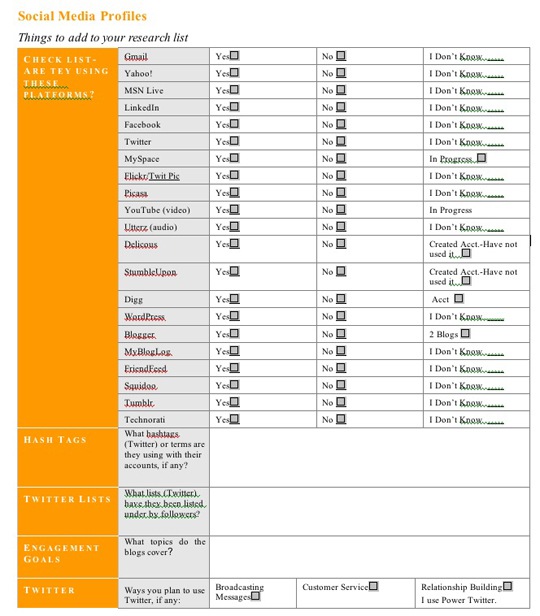 It’s amazing; with the vastness of the Information Highway, there are still potholes to fill. An article on finding your online customer base is one of them. In the SERPs, you get answers like, “add a credit card” or “accept checks online”. Completely useless, so I won’t even get into that. Hopefully this article will provide a better answer.
It’s amazing; with the vastness of the Information Highway, there are still potholes to fill. An article on finding your online customer base is one of them. In the SERPs, you get answers like, “add a credit card” or “accept checks online”. Completely useless, so I won’t even get into that. Hopefully this article will provide a better answer.
You can start a Facebook Fan page, a Twitter account, a Quora account, and wait for your customer base to find you. On the other hand, you can go where your customers are.
Where are they, though? Not everybody hangs out at the FB or Twitter water cooler, no matter what the reports say. So what’s a business professional to do? Where can you find your online customer base?
It’s all in the competition
Competitive research can really help you find your customers.
Competitors
“Competitors” for this exercise aren’t necessarily those selling your product or service. Instead, the competitors can be more thought of “topical discussers” – i.e. those talking about the same or relevant things you might talk about.
Once you start the social process, many of these people and businesses could end up being the same ones you friend, follow, poke, prod and otherwise befriend. Also, remember social competition isn’t necessarily the same as your online business competition.
Your social competitors can be considered as:
- Informational/Educational sites about your industry
- Product/Service review sites (if your industry is listed)
- Offline competitors with an online presence
- Top ten results in the SERPs for your targeted terms
That narrows things down a bit, doesn’t it? Let’s filter the results a little more, because you might end up with 30, 40 or even more to start with.
Stay with me. Just a few more things, then we can put it all together…
Socializing
Gather your list, whether you just put it in a Word document, Excel or a piece of paper (we prefer Excel). Start visiting these sites. What you’re looking for are sites with blogs and/or social accounts. Remove the sites in your list without these social aspects.
It’s important to note that, even if your competitors are on a specific social platform doesn’t mean you should do the same. They may not have done research to find their customer base, and just followed the crowd. On the other hand, there is nothing wrong with socializing and positioning yourself with these “competitors”. With social, there are enough various approaches that partnering may not be a bad thing.
Researching Your Findings
Now that you have a list, it’s time to spend some of your time checking blogs, seeing the type of communication they have with their readers, etc.
Visit your competitors’ social accounts:
- Do they have followers, fans, etc.?
- What are they talking about?
- Are people responding?
- What hashtags (Twitter) or terms are they using with their accounts, if any?
- What lists (Twitter) have they been listed under by followers?
- How active is their Fan page (FB)?
*Bonus Tips:
- If you already have a Twitter account, you can compare how your tweets are doing against a competitor by using Twitter Counter.
- You can speed up the time by using Tweet Stats to analyze your competitors’ accounts.
- You can find a whole slew of Twitter tools and addons (some work with Facebook and other social) at One Forty. Many might be useful in your researching.
Visit your competitors’ blogs:
- Are people commenting on these blogs?
- What topics do the blogs cover?
- Does the blog allow sharing on social networks? Which ones?
- Are people sharing these blogs on social networks? Which ones?
Overall, you want to find out if the social accounts your competitors are using can also be used as your customer base. As well, you want to find out if blogs are working for your competitors, because keeping up with blogging is a full time operation; you want to make sure it will be worth it for your company.
Search
If any of your competitors are using Twitter and non-branded hashtags, record those hashtags (example: #SEO) on your Excel or Word document. Then, go to Google Real Time Search and search for each hashtag. What you’re looking for here is:
- Relevant tags to your business and
- Which ones bring the highest RTs, comments, etc. from others
For example, a GRT search for #real estate italy will bring back few results. This indicates that, if you’re in Italian real estate, Twitter may not be the best place for you.
As well, visit the Videos search:
- Search for competitors’ names
- Search for the same words they used with Twitter hashtags
- Record the terms with 1) the most video results and 2) the most comments/views
Finally, use the Discussions search, using the same criteria.
* Bonus tip: If they’re using hashtags, look at tweetreach.com and see how far their hashtags reach is actually going. You would be amazed at how much power some of these RT’s have. Nothing wrong with positioning yourself with them.
Putting It All Together
By the time you’re done with all the research, you should have a pretty good idea of where your online customer base is hiding. Just in case, here’s a good checklist to follow for each potential place (download the large version here or by clicking the image below):

- Are my competitors using [social platform]?
- Have they gained a strong following?
- Are followers actively RTing, commenting, responding?
- Is this a good place, based on all the information, for me to put my time?
- If yes, how long will I test [social platform]?
- What metrics will I use to decide whether I should continue using [social platform] after [testing period]?
If you take notes during this exercise, you should also have:
- A list of hashtags you can use for a Twitter campaign
- A list of potential topics to cover/post/broadcast on Facebook
- A list of potential forums or discussion groups to join
- A list of potential topics for your own blog
- A list of potential social platforms to target
Taking It Offline
If you have an offline presence, don’t forget to include your social accounts (once you know which ones you’ll be using) on your business papers. Sometimes, a business begins building an online customer base by starting with the one they already have – offline. As well, depending on your industry, you might be able to ask your customers/clients what social accounts they use.
Conclusion
This isn’t a small undertaking. You may be saying, “This will take hours! I don’t have time for this!” My question to you is, do you have time to build a customer base? How about, do you have time to reach out to your target market, get better conversions, provide better customer service and build your business?
No matter how long this type of research takes, don’t give up. Keep in mind that, what you’re ultimately doing is building your business on real results, rather than wasting your time with efforts that go nowhere. This is something you can track with hard data, no guessing. How many of us think we know only to find out we had no clue? We’d love to hear your thoughts!




